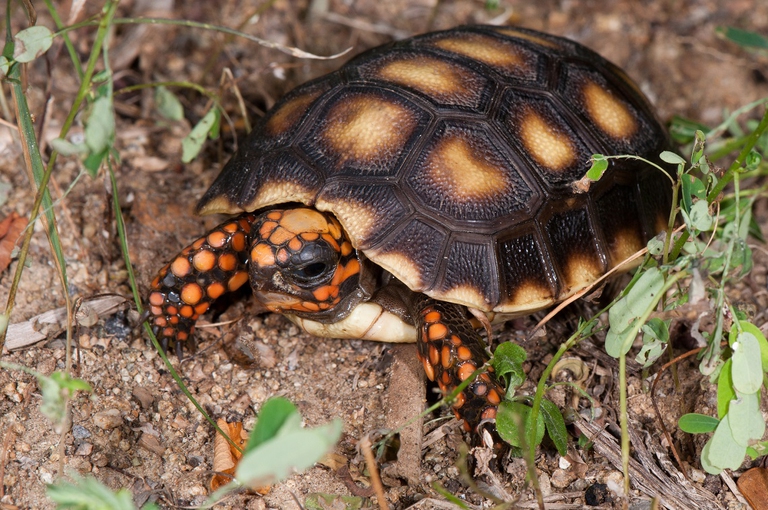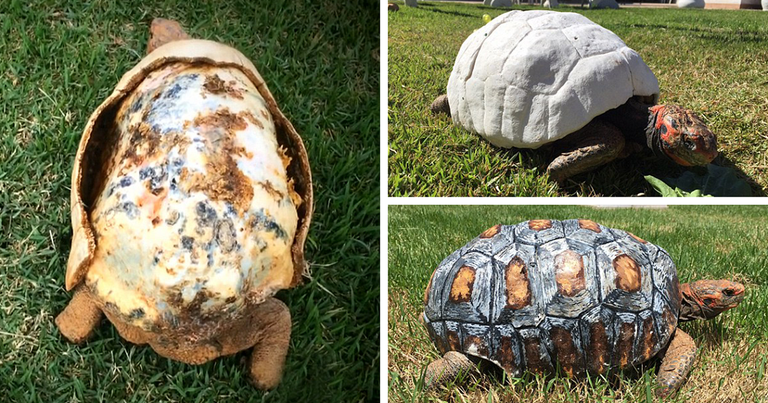
Our species took its first steps in a world covered in trees. Today, forests offer us sustenance, shelter, and clean the air that we breathe.
Freddy the tortoise lost most of its shell in a fire and a team of researchers gave it a new 3D-printed one.
For a tortoise, the shell isn’t just a body part, it’s a safe refuge, a shelter that protects it from the external world. It offers it protection from predators as well as adverse climatic and environmental conditions. In case of danger these reptiles can retract their heads, legs and tail under their shell, becoming almost impenetrable. For this reason a tortoise without its shell must feel naked and terribly exposed to dangers.
This is what happened to Freddy, a female red-footed tortoise (Chelonoidis carbonaris), who lost her shell during a forest fire in Santos, Brazil. When veterinarian Rodrigo Rabello found the animal, she was devoid of 85 per cent of her shell, so he decided to make a new shell for her.
Rabello, helped by a veterinarian, a dentist and a graphic designer, designed and realised a 3D-printed shell for the tortoise, which was named Freddy for its resemblance to Freddy Kreuger, a character of the film Nightmare. The team compared pictures depicting the shells of other tortoises and created a new one using PLA (Polylactic acid), a disposable plastic material derived from corn.
The shell was realised with a 3D printer and is made of four pieces that were assembled like a jigsaw puzzle (it took more than 50 hours to print every piece). In the beginning the shell that was surgically implanted in the tortoise’s back was unnaturally white. To solve this problem the vets turned to artist Yuri Caldera, who painted it in a more realistic way using nontoxic paint.
After the surgical operation Freddy contracted pneumonia, but she has now recovered and is rapidly getting used to her new “home”. However, this being the first time an entire shell is replaced with a 3D-printed structure, researchers don’t know exactly how long the shell will endure bad weather or when the animal could be reintroduced into the wild.
Such advancement in technology allow us to envision a new era in which injured animals will have their own personalised prostheses.
Siamo anche su WhatsApp. Segui il canale ufficiale LifeGate per restare aggiornata, aggiornato sulle ultime notizie e sulle nostre attività.
![]()
Quest'opera è distribuita con Licenza Creative Commons Attribuzione - Non commerciale - Non opere derivate 4.0 Internazionale.
Our species took its first steps in a world covered in trees. Today, forests offer us sustenance, shelter, and clean the air that we breathe.
Poachers in Africa are encroaching on wildlife land and killing rhinos in travel hot spots now devoid of visitors due to the coronavirus pandemic.
Actor and environmental activist Leonardo DiCaprio has contributed two million dollars to a fund to protect Virunga National Park in Congo from threats such as terrorism, the coronavirus and poaching.
For the first time in seventeen years, Iceland’s two main whaling companies won’t resume whale hunting. The announcement concerns this year’s season but could carry into the future.
The relationship between the coronavirus and wildlife is complex: while the pandemic may lead to a reduction in the illegal trade in wild animals, it may also encourage it in other respects.
The largest coral reef in the world is severely threatened by climate change, but researchers are developing strategies that could contribute to saving the Great Barrier Reef.
NGO Free the Bears has opened a mountain sanctuary for moon bears in Laos. With the government’s help, it aims to close all bile farms by 2022.
Seychelles have extended its marine protected area, which now covers over 400,000 square kilometres, an area larger than Germany.
The tapir was reintroduced into Brazil’s Atlantic Forest, the country’s most at-risk ecosystem. The species can play a key role in the forest’s recovery.









